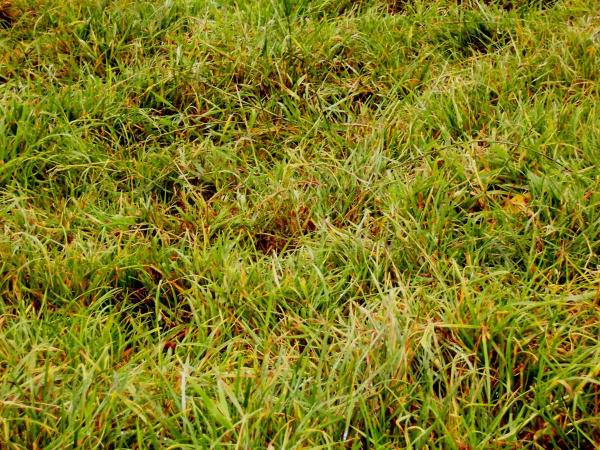How often can I apply sulfur to my lawn? (Free tips)
Sulfur is a good soil amendment mineral that helps adjust the pH of the soil. It’s responsible for the healthy function of the lawn as it aids nitrogen metabolism, protein, vitamins, and chlorophyll formation. When sulfur is added to the soil, the bacteria in the soil help break it down into sulfuric acid which then balances the pH of the soil. Meaning that it helps keep our lawn green and healthy.
But then there is a saying that too much of everything is not good. This leads us to the popular question “How frequently should I apply sulfur to my lawn?”
Let’s find out!
When should I start Applying Sulfur to my Lawn
You can easily tell a lawn is deficient in sulfur by its appearance as it tends to have yellowish discoloration in its blades when highly deficient and has light green when mildly deficient. it is easily susceptible to diseases and exhibits a slowed growth rate.
A lawn rich in sulfur can withstand tough weather conditions and easily recover when hit with a disease. Once you notice this you need to begin a sulfur treatment.

How Frequently Should I apply sulfur to my lawn
The rate of sulfur application to a lawn depends on several factors which will be listed below.
-
The texture of the soil
-
The pH level of the soil
Soil Texture
The texture of the soil indicates the proportion of sand, silt, and clay content.
The pH level tells if the soil is acidic, basic, or neutral which could range on a scale of 1-14. The pH of a healthy lawn is between 6.5 to 7.
Diagram of a pH scale
Testing for Soil pH
It’s important to test the soil before applying sulfur to determine what nutrients are available and missing. You can test your soil using a home test kit and you can contact your local county extension service for soil testing if you do not have access to a home kit. When picking soil samples you must pick from 6 to 10 random spots at a depth of 3 inches on an established lawn. You may need to dig further up to 6 inches if it’s fresh soil intended for the lawn. The test helps you determine if the soil is acidic, basic, or alkaline.
You can watch the video below if want to test your soil from home.
A few things you’ll be needing to test from home according are;
-
Baking soda
-
Soil samples
-
Vinegar
-
Measuring cup
Lowering Soil pH by Applying Sulfur
Most lawns do well when the pH is between 6.0 – 7.0. It’s important to note that when adjusting soil pH, you can add up to 5 pounds of elemental sulfur per 1000 Square feet twice within a year. Should there be instances where the amount of elemental sulfur needed will exceed 5 pounds per 1000 square feet, it would be advisable to split the application into batches.
You should begin treatment with one-half of the recommended rate and after about 2 to 3 months, re-evaluate the soil. If the pH of the soil has not been leveled by then, apply the remainder of the material.
Applying too much sulfur once every day can burn or damage your grass and may even lead to toxicity.
Sulfur applied with the intent to lower the soil pH may have only a temporary effect. So, you should repeat the sulfur applications to maintain desired soil pH so that the bacteria can have more sulfur to convert to sulfuric acid by negating soil alkalinity. It’s best to apply during cooler fall and spring weather.
For bare soil, add not more than 14 pounds per 1000 Square feet in a single application to 6 inches depth to the root zone.
Maximise Your Lawn's Health with Sulfur Application: See Rates in Our Table
The table below contains rates of how to apply sulfur to your lawn to reduce soil pH depending on your soil texture.

An example to show how to use the table: Assuming the soil has an initial soil pH of 7.5 in loamy soil and you want to have a desired pH of 6.0, reading across from the column (initial pH) 7.5, you check loamy under the desired pH of 6.0. The figure there reads 2 that 9 pounds of Sulphur per 1000 square feet are required to reduce the soil pH to 6.0.
The amount of sulfur that should be added yearly shouldn’t exceed 10 pounds per 1000 Square Feet annually. if the rates needed to exceed 10 pounds per 1000 square feet, it would be advisable to split the application into batches until the desired result is achieved.
How long sulfur takes to work in Lawn
It takes 6 months or more for sulfur to take effect depending on how rich the intended soil is rich in bacteria. A soil rich in bacteria oxidizes elemental sulfur faster. It will take longer if the soil doesn’t have enough bacteria.
Conclusion
The first thing that should top your list when planning to set up a new lawn is soil pH testing. You should take early actions to help correct the soil before planting because doing this does not risk your lawn getting burnt or having an increased level of toxicity that could damage your lawn.
Finally, ensure you examine your soil pH frequently depending on the type of soil texture, if sandy you should frequently check because it is porous and sulfur can easily be leached away.

